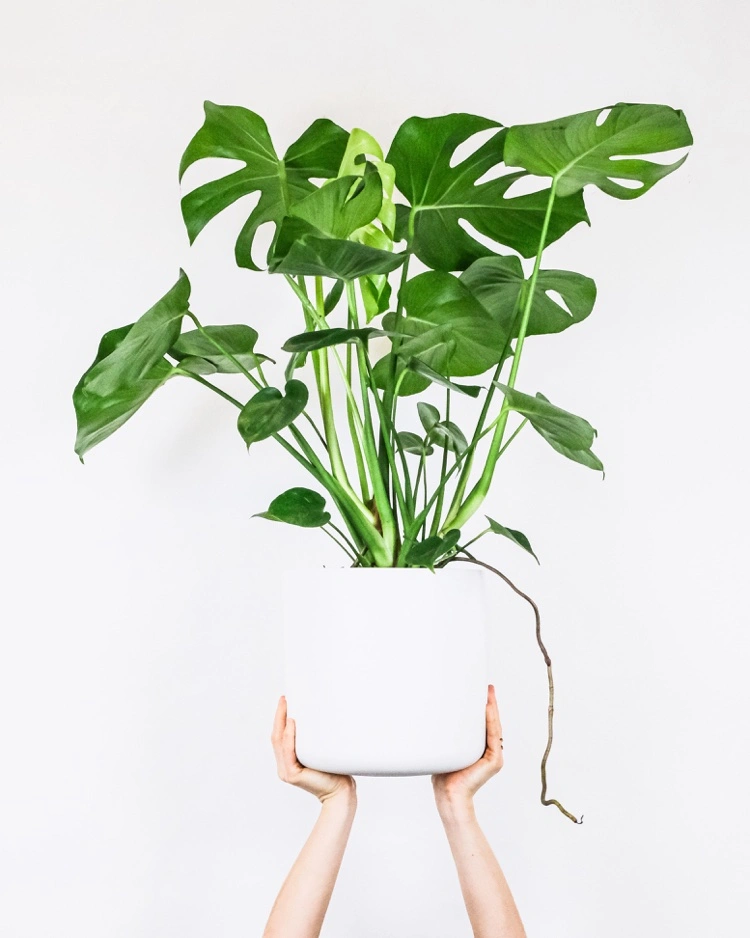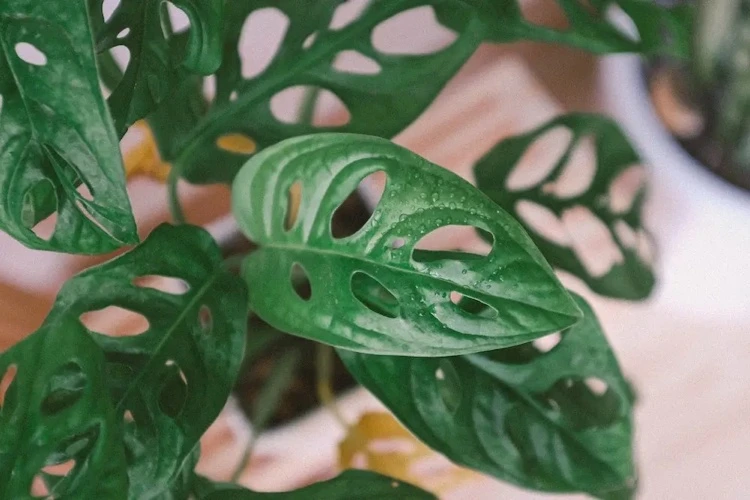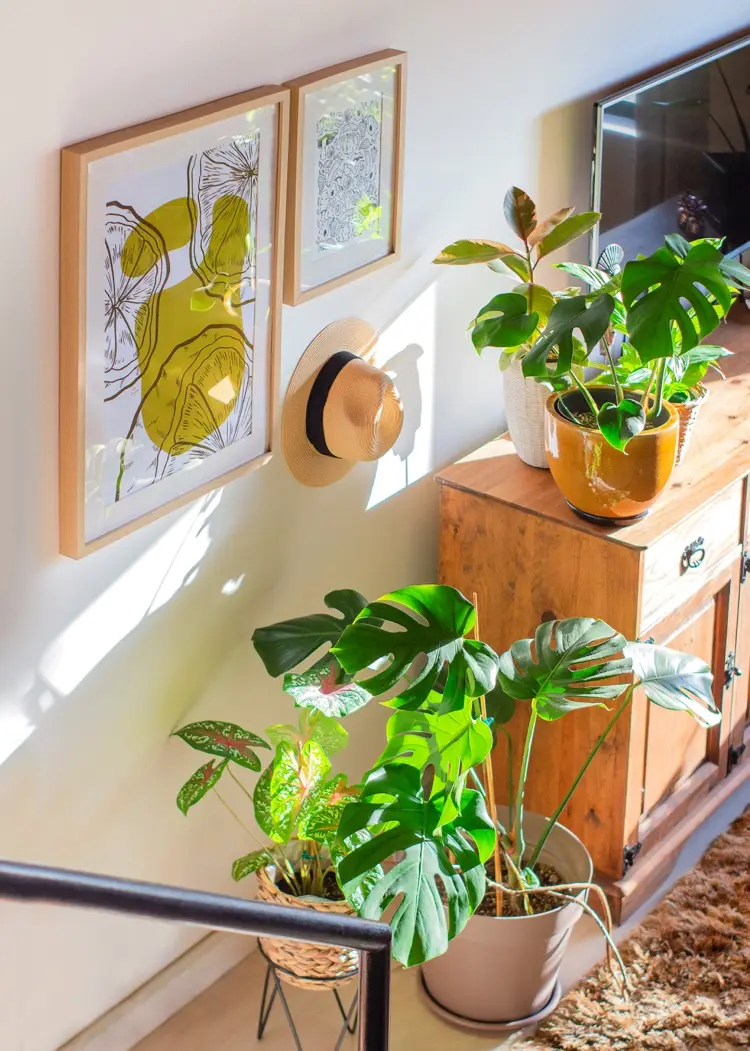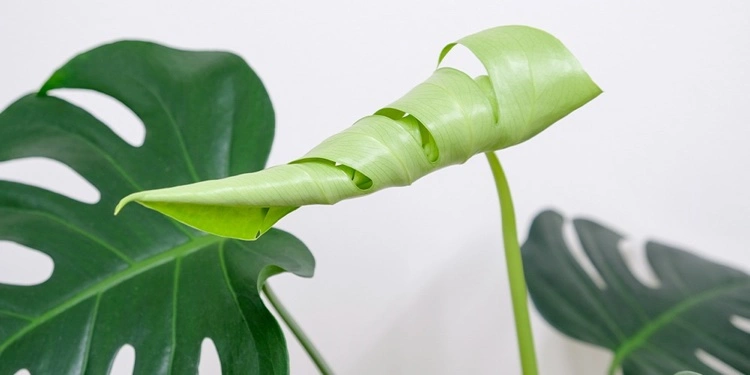The big, bold Monstera is one of the trendiest houseplants and will add a ‘wow’ factor to any room. This easy to grow evergreen climber is a popular choice for the home and office. Although the Monstera is considered easy to care for, there are a few care tips to keep in mind so that the plant feels comfortable and thrives. Here are the top Monstera care tips and solutions to some common houseplant problems.
Indoor plants are the perfect way to bring nature indoors at any time of the year and should not be missing in any home. They can enhance the beauty and overall appearance of a space, eliminate airborne pollutants and boost a good mood and creativity. And if you like the green side of life and want to turn your home into a green oasis, then the impressive Monstera plant is the right choice for you.
What are the most popular Monstera species?
There are over 40 Monstera species known worldwide, but you will only find a few at your local nursery. All vary in size, color and shape of the leaves. Here are the most popular ones:
Monstera deliciosa: This is the most common species and you are most likely to find it at your local garden center. It’s called “deliciosa” (delicious) because it produces delicious fruit when grown in the best conditions in its homeland.
Monstera adansonii: Also called Swiss cheese plan or five holes plant, this species is smaller than the deliciosa, but the attractive holes occupy almost 50% of the leaves.
Monstera obliqua: In this species of monstera, the holes take up most of the paper-thin leaves, creating a unique look. However, the leaves are more delicate than the ones of other species, making the plant a bit more difficult to care for.
Monstera acuminata: This monstera impresses with its heart-shaped, pointed leaves that can reach a height of 150 cm. Also known as window leaf, this species is a good choice as a climbing plant.
If you bring a window leaf into your home, you should definitely find out about the right Monstera care. This is the only way the plant can develop its full splendor.
Also read: Why Are My Monstera Leaves Turning Yellow? Reasons + Remedies
Monstera care: the best tips
Generally, only two different types of Monstera are cultivated as houseplants – Monstera deliciosa and Monstera adansonii. Monstera adansonii differs from M. deliciosa in having longer, tapering leaves and fully closed leaf holes. Monstera deliciosa’s leaf holes eventually grow towards the edge and open when mature.
Location
The location must offer bright to medium indirect light for the Monstera. The houseplant is not suitable for intensive, direct sun. Partial or full shade is fine too, but leaves don’t form as well in a darker location. When choosing a location, keep in mind that the plant also requires a lot of space.
Watering
Water the Monstera once every 1-2 weeks, allowing the soil to dry out between waterings. When the light is brighter, you need to water more often, when the light is weaker, less often. Pro tip: Monstera benefits from filtered water or from water that has been left overnight before use. The leaves should be sprayed occasionally with water at room temperature.
Note: The Monstera plant tolerates drought better than too much water. If in doubt, water less and let the soil dry out before watering.
Humidity and temperature
Normal indoor humidity is enough for the Monstera, but they prefer humid conditions when possible. Consider using a humidifier to increase the humidity in the room, especially during the colder months.
Like most indoor plants, the window leaf prefers temperatures in the range of 18°C – 30°C. It is best if the temperature does not drop below 15 °C.
Soil
Use well-drained potting soil for the Monstera. If needed, mix in ingredients like perlite or lava rock to improve soil aeration.
Fertilizer
Like any potted plant, the Monstera needs a regular supply of nutrients to thrive. From April to August you should fertilize the houseplant every 2 weeks with liquid fertilizer for green plants. Fertilizing once a month is sufficient in autumn and winter.
Also read: Most Beautiful Houseplants for Dark Rooms to Create a Home Oasis
Common problems with the plant and how to solve them
There is nothing worse than a houseplant that is not thriving. An important part of Monstera care is dealing with various plant problems. We give the solutions to the most common ones:
The monstera leaves are curling up
This is a sign that you are either watering your plant too much or not giving it enough moisture. It can also mean that your evergreen is suffering from pest infestations, heat stress, or overwatering. Check the soil and look closely at your Monstera to identify the problem. Adjust the location and watering.
No holes in the leaves
Monsteras are called window leaf because of their holes. If your plant doesn’t start splitting when mature, check and adjust the water and sun exposure for a happier (and thriving) plant.
Brown leaf tips
Check the humidity, it might be too low. Place your Monstera in a different room – for example, the bathroom or the kitchen – so that the plant is in a room with greater humidity.
Torn leaves
Since the leaves of this plant have holes, you might think that tearing is normal. But it isn’t. Increase the humidity in the room and handle the plant with care. And don’t worry – the cracks will heal over time.
Tip: If your monstera leaves are showing obvious signs of damage, don’t be afraid to snip them off – especially if they’re heavily colored brown or black – as the spots won’t heal.
Please note: Monstera leaves are poisonous if consumed and should be kept out of the reach of cats, dogs and small children.
Also read: How to Make a Moss Pole: Easy Instructions for a Compact Climbing Aid for Monstera and Other Plants





